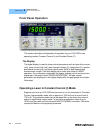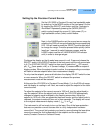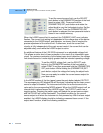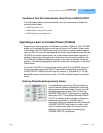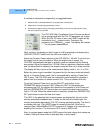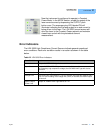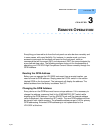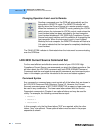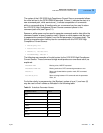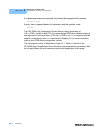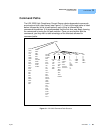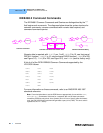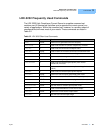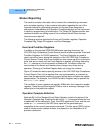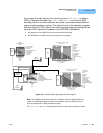
REMOTE OPERATION
LDX-3232 Current Source Command Set
22 LDX-3232
CHAPTER 3
Changing Operation from Local to Remote
Sending a command over the GPIB will automatically put the
instrument in REMOTE mode. The REMOTE indicator will
identify when the Current Source is in remote operation mode.
When the instrument is in REMOTE mode, pressing the LOCAL
switch returns the instrument to LOCAL control mode unless the
Local Lockout state has been activated by the host computer.
Local Lockout disables all LDX-3232 High Compliance Current
Source front panel switches until this condition is changed by the
host computer. When the instrument is put in Local Lockout
Mode by the host computer, the REMOTE indicator will flash at a
1Hz rate to indicate that the front panel is completely disabled by
Local Lockout.
The TALK/LISTEN indicator is illuminated when the instrument is communicating
over the GPIB bus.
LDX-3232 Current Source Command Set
For the most efficient and effective remote control of your LDX-3232 High
Compliance Current Source, we recommend you study the following sections. You
will learn about the LDX-3232 command sets, both GPIB-IEEE488 Command
Commands and the most used device specific commands, and command syntax.
Later in this chapter you will be introduced to the error and status registers.
Command Syntax
Any command or command query must contain all of the letters that are shown in
the LDX-3232 Command Path Structure, Figure 3.2. However, the Current
Source's command parser is NOT CASE SENSITIVE so upper or lower case may
be used in any combination. The lower case letters shown with the Device
Dependent commands in Chapter 4 are optional letters and may be used for
clarity. For example, the following commands are equal:
• LAS:DIS 1
• LAS:DisP 1
• LAS:DISPLAY 1
In this example, only the first three letters "DIS" are required, while the other
letters, "play" are optional. These optional letters must be used in the proper
sequence as shown.



